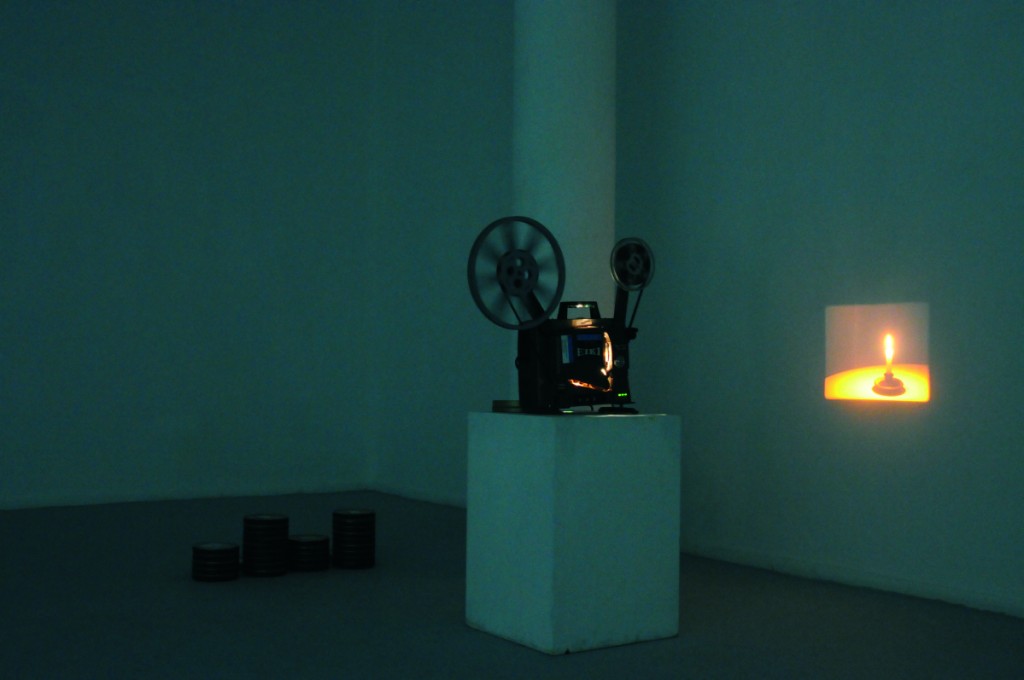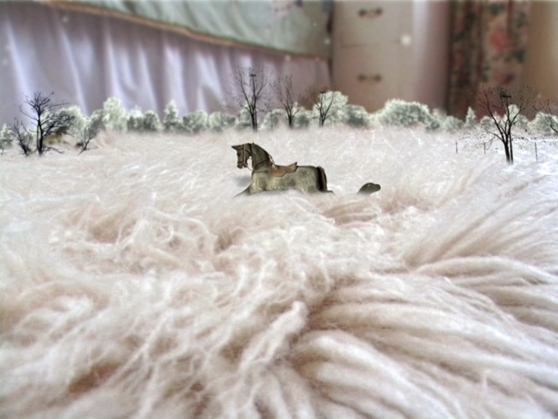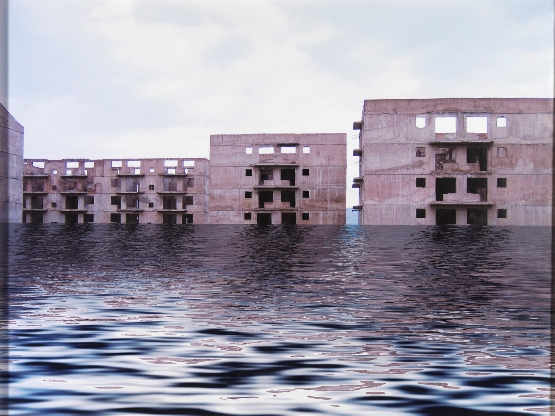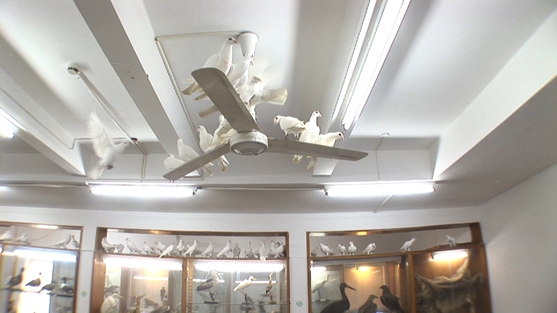Artists born in Bulgaria, Albania, Denmark and Japan are among those represented in a local and international selection of contemporary art – installations, video, photography and drawings – recently acquired by the Israel Museum either as gifts or through the generosity of purchasing committees in Israel, the USA and Europe.

With more space available in the ‘new look’ Museum, there are greater opportunities for showcasing new acquisitions, But the question is how and within what context. This challenge has been most successfully taken up by Suzanne Landau in Magic Lantern, the enchanting exhibition she has curated featuring 18 newly acquired works. “I was looking at the list of recent acquisitions “she said “seeking a thread for a dialogue and came upon Jonathan Monk‘s Candle Film (where an old fashioned projector and reels of 16mm film document the ‘life’ of a lighted candle.)”I found something magical about this image, the ‘landscape’ it creates, the material itself, and the projector’s connection to the magic lantern and the beginnings of cinema. I then realized that many items amongst our new acquisitions could be brought together to create a magical atmosphere that traces the line between the real and the daydream. My selection was limited to landscapes and interiors.”

Several works in this show combine interiors with landscape. Hirawaki Sawa‘s video animation Going Places sitting Down (2004), for example, in which wooden rocking horses move from the interior of an English country home into a magical world, as perhaps dreamed up by a child. A camel picks his way over sand dunes formed from rolls of carpet; hobby-horses glide across a lake of water that flows from a dripping tap, or gallop over a snow-covered field that is actually a sheepskin carpet. This is a work of an exceptional artistry and imagination.

Equally magical is Anila Rubiku‘s little house constructed from paper and embroidered with folk motifs. Light glows within it, and this light shines through perforations in the walls transforming this object into a magic lantern of sorts. According to the artist, her work was inspired by memories of her childhood in Albania. At that time sudden power cuts were commonplace, leaving entire neighborhoods in the darkness and people helpless. So this house, the antithesis of the home she remembers, is purely a product of her imagination.

Armenia is the location for Ghost City, Vahram Aghasyan‘s eerie photographs of buildings half sunk in water; a sight that seems too fantastic to be rooted in reality. But in fact, these are the remnants of a housing project planned by the Soviet regime following an earthquake in a residential area of northern Albania. When the USSR collapsed construction ceased. For the local people, this desolate scene must serve as an ongoing reminder of an unfulfilled dream of a better life.
Fact and fiction blend together in Julian Audebert‘s photographs The Searchers, named after the 1956 film, considered the greatest Western of all time. In his version, Audebert has created a panoramic landscape that combines scenes from the set of the film with clips from the documentary made during its production. Audebert appears to be inviting us, the viewers, to think about the way that myths are created as we try to distinguish between real and artificial details. Unfortunately, these photos lack clarity, so this is no easy task.

The Searchers could also have been the title of Yehudit Sasportas‘ multi-channel DVD projection Ghardy which depicts, through photos, drawings and animation, a beam of light moving across dark forests and marshlands, music intensifying this drama. A wall text informs us that this type of imagery is the traditional metaphor for the unconscious mind. But reading further, one learns that these photos are of forests in Germany. And then one’s mind shifts to consider Teutonic myths where forests were magical places inhabited by Gods. Or else, to think of recent periods in German history where searchlights were employed to hunt down an escaped prisoner or to expose defectors escaping to the West.

A variety of connotations also stem from Silent Among Us, a short but memorable video piece by Dana Levy. Taking her camera into Beit Shturman, a Natural History and Archeology Museum in the Jezre’el valley, she photographed a flock of live pigeons fluttering and swooping around embalmed birds ‘imprisoned’ for decades in glass cages. In her work, Levy appears to be questioning the value of this type of museum, but also – since it is located in Ein Herod, one of the oldest kibbutzim in the country – she is perhaps making the point that life goes on, while the pioneer generation, long dead, remain silent in their graves. Within the context of this exhibition, Levy performs a little magic by bringing this Museum to life, if only for a moment.
Bella and Harry Wexner Gallery, Israel Museum
The exhibition will be open through April 13, 2012





